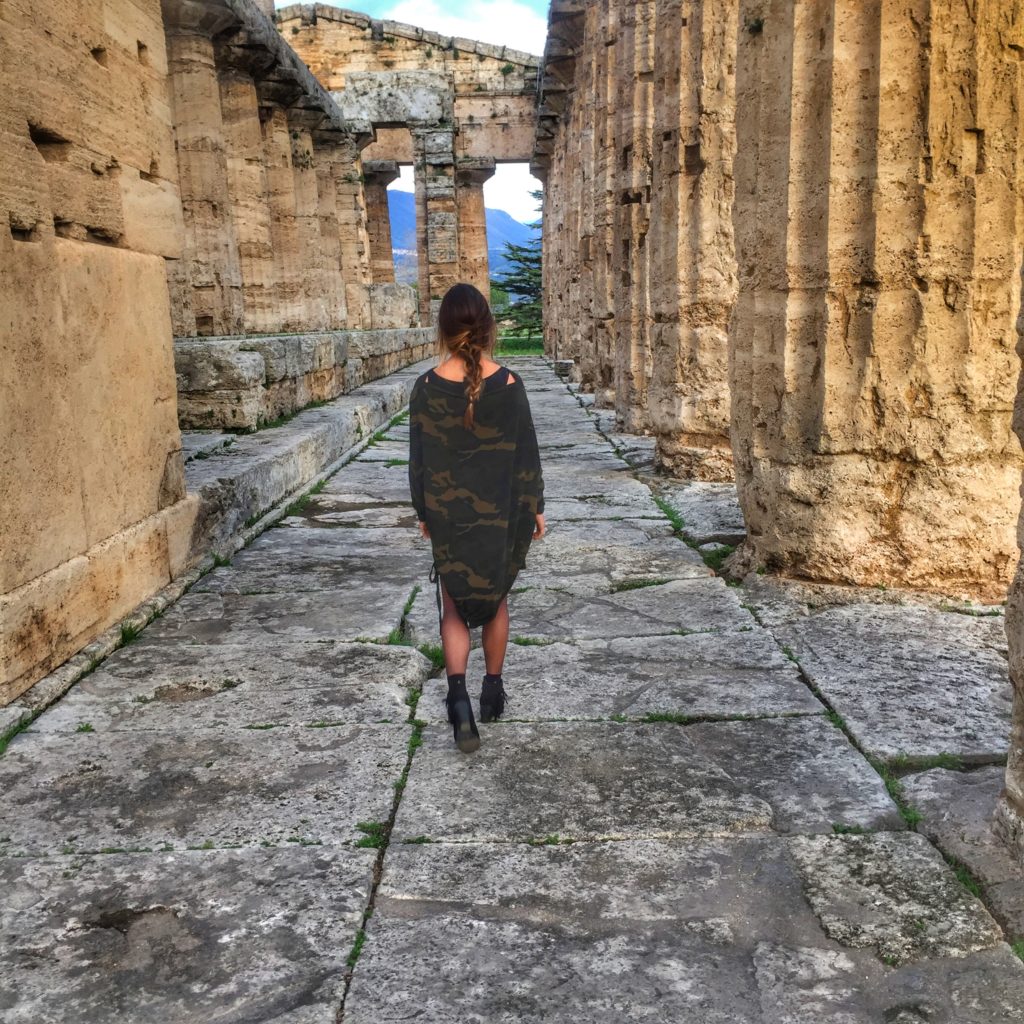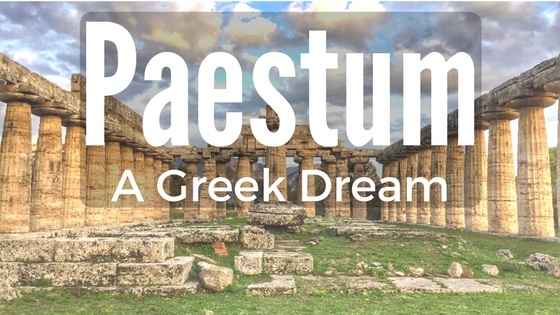When a visit to the Greek Temples of Paestum followed by a night on an Italian farm was suggested I scoffed at the idea. I had just spent six weeks placing gold on Buddha’s in Myanmar, seen the breath-taking skeletal remains at Herculano, trekked up the Acropolis, walked the Roman forum at sunset and grew up on a farm. Why would I want to road-trip away from the ragged coastline of Amalfi, through the traffic of Solerno into the farmlands to see ruins? I arrogantly said “They are just Greek ruins. Haven’t we seen enough?” Despite my protests, we made the trip and my arrogant-traveler stood in silence over the magnificence of Paestum. As the evening birds chirped, I felt transported back in time.
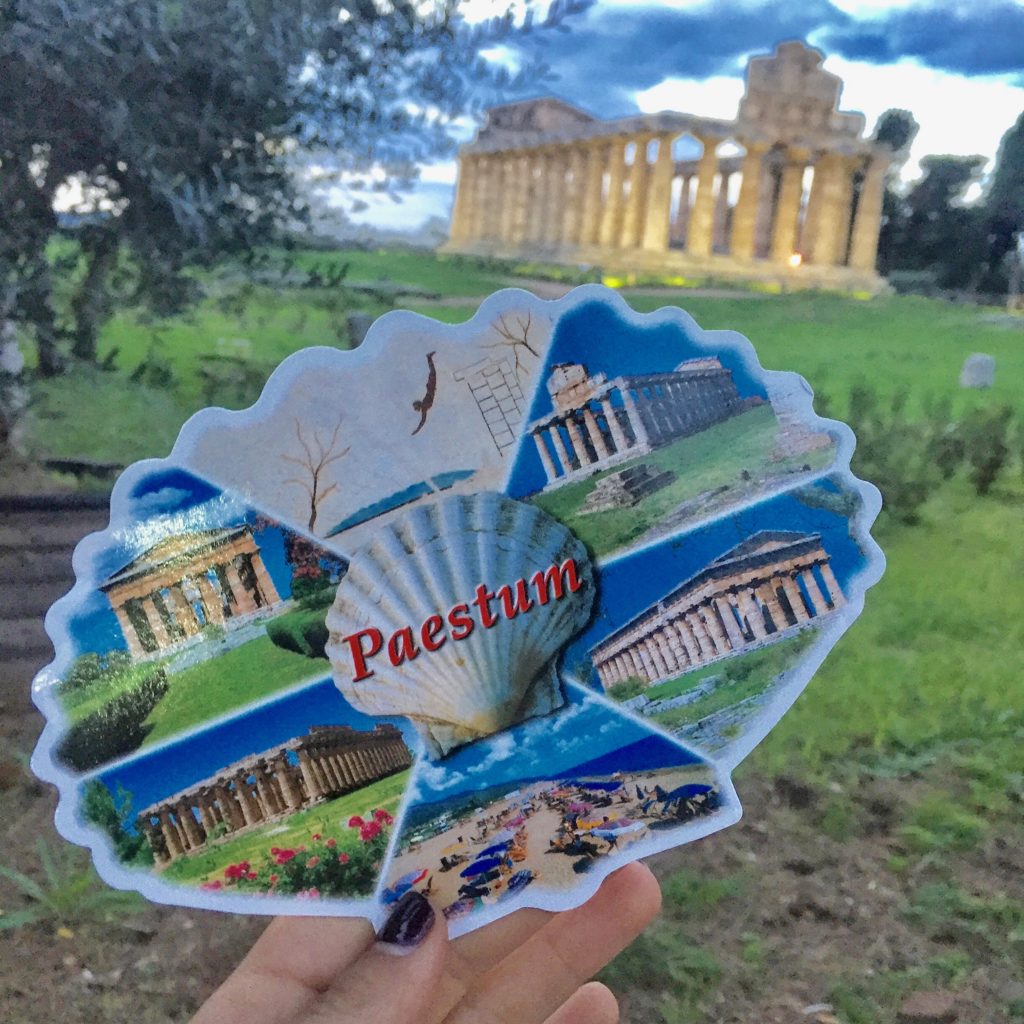
History of Paestum
Standing in their 600 BC glory were three ancient Greek temples, their doric columns standing straight and prideful in their sturdiness. A stone’s throw from the coast, these structures were built by Greek colonists and the region named Poseidonia – the greatest temple of the three named for Poseidon. Later to be conquered by the Lucanians then the Romans who called it Pesto or Paestum, only to be abandoned the Early Middle Ages and left undisturbed until the 18th century.
Today the ruins are adjacent to the modern, small town of Paestum, but still visible through the black metal fence. You could marvel at the monuments to ancient gods but the sites will call you in! For less than 10 euro you may enter the archaeological site with its walled temples, paved roads, and remains of an amphitheater. Plus, your tickets includes entry into a fantastic national museum which houses the remains from many nearby Greek settlements.
While the history of the place is lovely, the best thing about Paestum is how close you can get to the temples! You can walk into the temples, take pictures and touch the columns!
Click edit button to change this text.

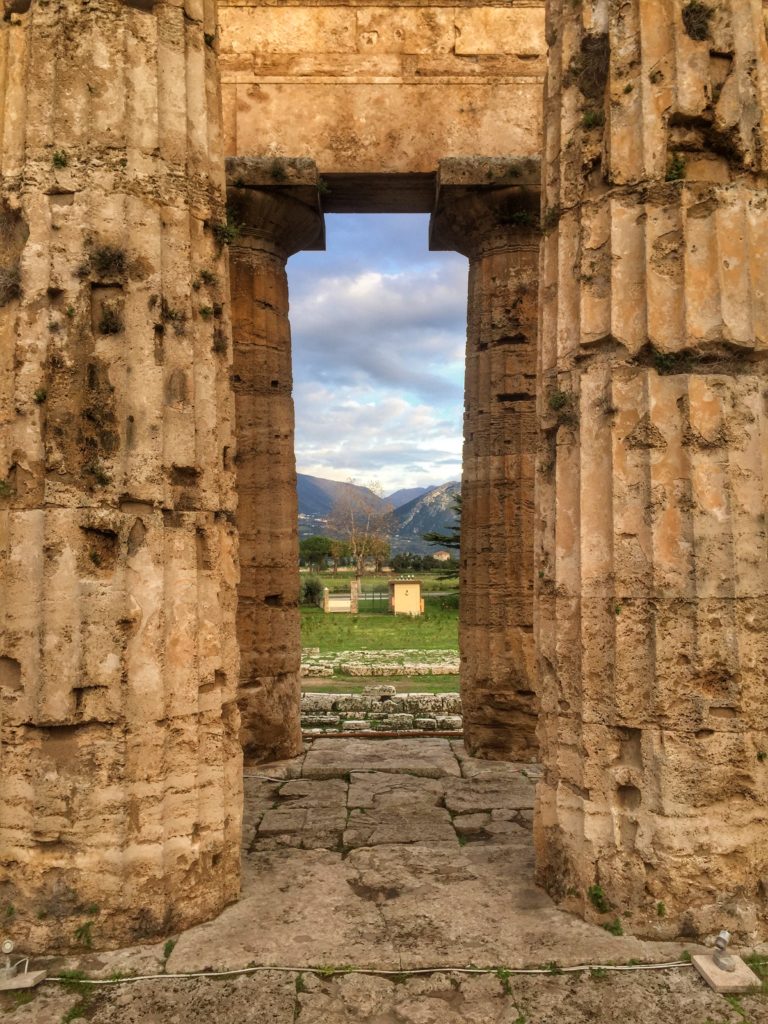
Visit
If you go, just remember that the archaeological museum is open daily from 8:45am-7pm, except for the first and third Monday of the month. The archaeological site is open from 9am daily and closes an hour before sunset. It’s only 6.50 euros for both.
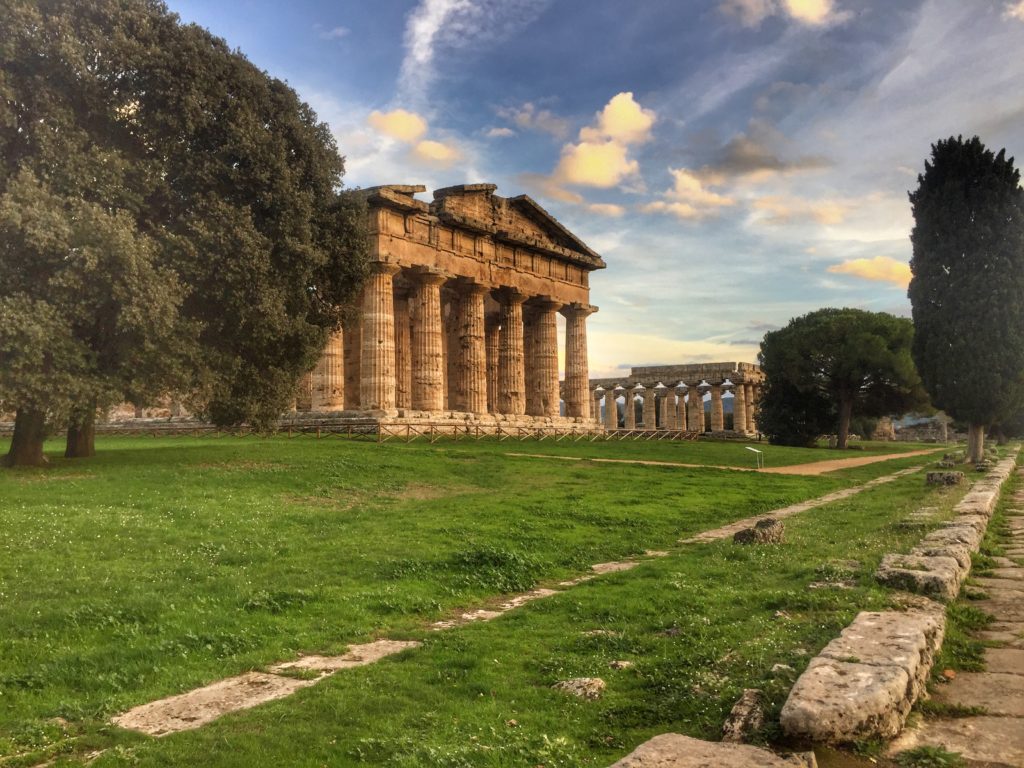

Getting There
You don’t need more than a day in Paestum, so I wouldn’t recommend staying over unless you plan to spend some time at the nearby beaches of the Gulf of Salerno. If you do decide to stay the night I recommend a farm stay at Casale Giancesare.
Car:
Paestum is an easy day trip from either the Amalfi Coast’s Salerno and if you are planning to make it a day-trip depart Salerno mid-morning to make the most of your afternoon in Paestum.
Train
You are two stop choices: Paestum or Capaccio-Roccadaspide and can taxi or walk to the site. From Salerno to Paestum – 30 minutes. From Naples to Paestum 90 minutes.
Bus:
Slower but cheaper but scenic. Take one of these bus lines: from Salerno to Paestum through CSTP (line 34), SITA or Autolinee Giuliano Bus (lines 3, 4, 5, 6, 7, and 10). CSTP or the Autolinee Giuliano from Naples to Paestum.
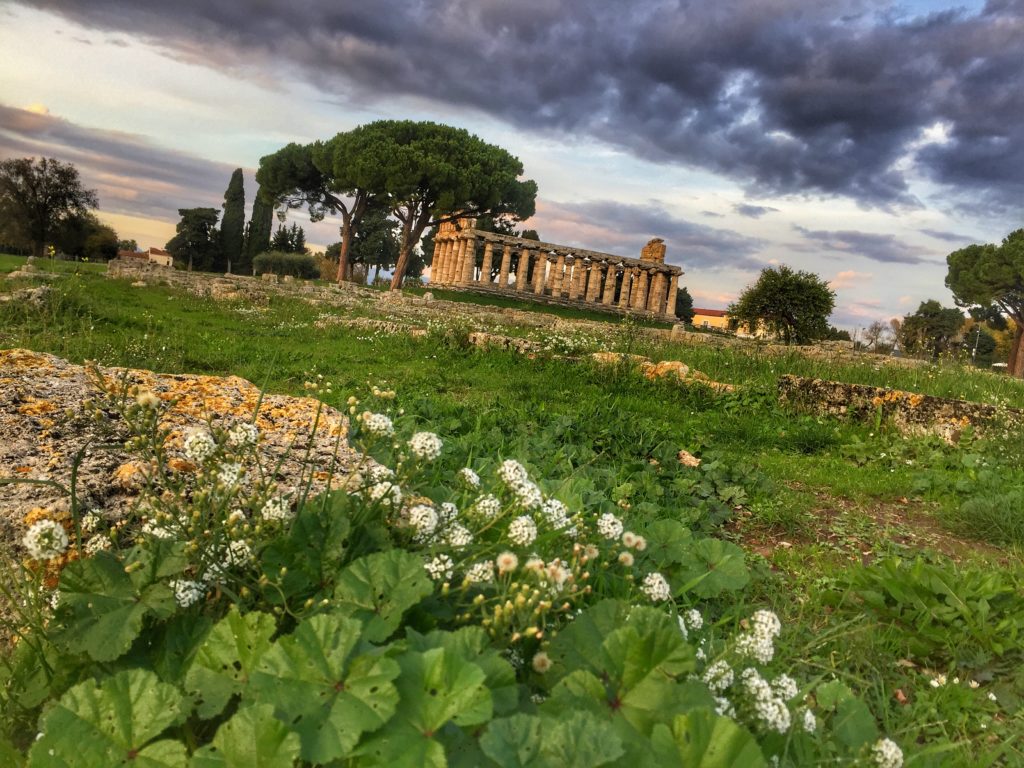

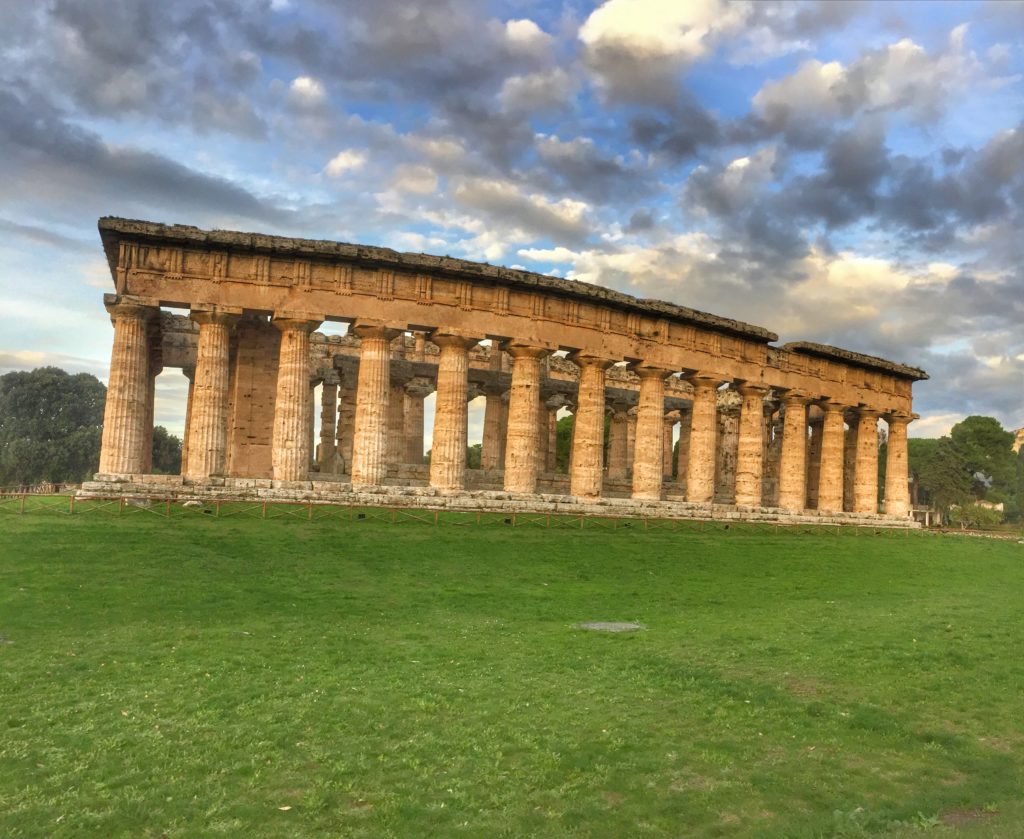
Thanks for reading!
